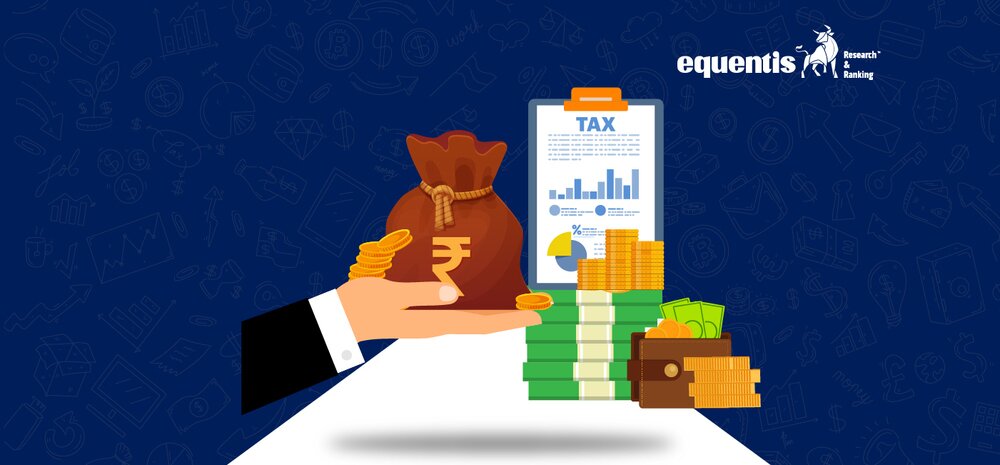In 2020, the Indian government significantly changed dividend taxation by abolishing the Dividend Distribution Tax (DDT). This move shifted the responsibility of paying dividend tax from companies to individual investors. As an investor in Indian Exchange-Traded Funds (ETFs), it’s essential to understand how this change affects you.
What Is Dividend Distribution Tax?
Before 2020, companies or mutual funds had to pay the government dividend distribution tax when distributing dividends to their shareholders. This tax was deducted at the source, meaning companies paid it before distributing the remaining dividend to shareholders. The Dividend Distribution Tax rate was 15% of the gross dividend amount, but after including the surcharge and cess, the effective rate was higher.
Why Was Dividend Distribution Tax Abolished?
The primary reason for abolishing the Dividend Distribution Tax was to eliminate the cascading effect of taxation. Under the previous system, companies paid Dividend Distribution Tax on dividends, and shareholders, especially those in higher tax brackets, faced additional tax when their total income, including dividends, was taxed again.
This led to double taxation, reducing investors’ overall returns. By removing the Dividend Distribution Tax, the government aimed to make the taxation process more transparent and align it with global standards, as investors typically tax dividends.
How Does This Affect Investors in Indian ETFs?
With the removal of the Dividend Distribution Tax, dividends distributed by ETFs are now taxed directly to the investors. Here’s how it impacts you:
- Taxation Based on Individual Income Tax Slabs:
Dividends you receive from ETFs are added to your total income and taxed according to your applicable income tax slab.
Example: If you’re in the 20% tax bracket and receive ₹10,000 as dividends, you’ll pay ₹2,000 as tax. - Increased or Decreased Post-Tax Returns for Some Investors:
Previously, the Dividend Distribution Tax was applied uniformly, irrespective of the investor’s tax bracket. If you’re in a lower tax bracket, you might pay less tax on dividends than before. Example: If you fall under the 10% tax slab, you’ll now pay ₹1,000 on a ₹10,000 dividend. Earlier, the effective Dividend Distribution Tax (DDT) rate was 20.56% (including surcharge and cess). So, instead of ₹1,000, you would have paid ₹2,056 on a ₹10,000 dividend. - Impact on High Net-Worth Individuals (HNIs):
The tax liability on dividends has increased for investors in the highest tax bracket (30%). They now pay more tax on dividends than under the previous Dividend Distribution Tax regime.
Example: Previously, the effective Dividend Distribution Tax (DDT) rate was 20.56%. So, on a ₹10,000 dividend, the tax under DDT would have been ₹2,056. Now, at a 30% tax rate, you pay ₹3,000, making it less favorable for high-income investors.
Step-by-Step Guide to Understanding the Impact:
- Identify Your Tax Bracket: Determine your total annual income to know which income tax slab you fall into.
- Calculate Total Dividend Income: Sum up all dividends from your ETF investments during the financial year. Remember, dividends up to 10,000 in a year are tax-free.
- Compute Tax Liability:
- Add the dividend income to your total income.
- Apply your income tax rate to the dividend portion to find out the tax payable.
Practical Example:
- Scenario 1: An investor with an annual income of ₹5 lakh (falling under the 20% tax slab) receives ₹50,000 as dividends. Up to 10,000 dividends in a year are tax-free.
- Tax Calculation: 20% of ₹40,000 = ₹8,000.
- Tax Calculation: 20% of ₹40,000 = ₹8,000.
- Scenario 2: An investor with an annual income of ₹15 lakh (falling under the 30% tax slab) receives ₹50,000 as dividends. Up to 10,000 dividends in a year are tax-free.
- Tax Calculation: 30% of ₹40,000 = ₹12,000.
Considerations for ETF Investors:
- Choice Between Growth and Dividend Options:
- With dividends now taxable at your slab rate, opting for growth-oriented ETFs might be more tax-efficient. You can defer taxes until you sell the units, potentially benefiting from lower capital gains tax rates.
- Tax Planning:
- Remember your total income and how additional dividend income might push you into a higher tax bracket.
- Consult Financial Advisors:
- Engaging with professionals offering share advisory services can help tailor your investment strategy in light of these tax changes.
Impact on Investment Strategies:
- High Dividend Paying Stocks:
- If you prefer regular income, investing in high-dividend-paying stocks through ETFs can provide that. However, remember that dividends are taxed at your applicable rate.
- Reinvestment Opportunities:
- Without dividend tax, companies might reinvest profits into the business instead of paying dividends, potentially leading to capital appreciation and benefiting investors seeking long-term growth.
Understanding Related Tax Concepts:
- Tax on Mutual Funds:
- Similar to ETFs, dividends from mutual funds are now taxed in the hands of investors. Additionally, capital gains from mutual funds have specific tax treatments based on the type of fund and holding period.
- Income Tax Concepts:
- To effectively plan your tax liabilities, familiarize yourself with income tax concepts such as gross total income, deductions, and exemptions.
Conclusion:
The abolition of the Dividend Distribution Tax has shifted the tax responsibility to investors, making it crucial to understand how dividends are taxed based on your income slab. This change offers more personalized tax planning opportunities and necessitates a closer look at your investment choices in ETFs and other dividend-yielding instruments. Staying informed and consulting with financial advisors can help you navigate these changes effectively, aligning your investment strategy with your financial goals and tax considerations.
Related Posts
Disclaimer Note: The securities quoted, if any, are for illustration only and are not recommendatory. This article is for education purposes only and shall not be considered as a recommendation or investment advice by Equentis – Research & Ranking. We will not be liable for any losses that may occur. Investments in the securities market are subject to market risks. Read all the related documents carefully before investing. Registration granted by SEBI, membership of BASL & the certification from NISM in no way guarantee the performance of the intermediary or provide any assurance of returns to investors.
FAQs
What is Dividend Distribution Tax (Dividend Distribution Tax )?
Dividend Distribution Tax was a tax levied on companies in India on the dividends they paid to shareholders. Introduced to simplify the tax structure and ensure compliance, it aimed to tax the income at the company level, thus reducing the complexity of tracking individual shareholders for dividend income.
How were dividends taxed under the Dividend Distribution Tax?
Under the provisions of Section 115-O, companies were required to pay tax at a specified rate on the total amount of dividends distributed to shareholders. The rate was originally set at 10% but was later increased to 15% plus applicable surcharge and cess. This meant the effective rate was higher than the base rate due to the additional levies.
Why was the Dividend Distribution Tax abolished?
The abolition of the Dividend Distribution Tax aimed to ensure that the dividend income is taxed at the applicable rate of the individual shareholder, thereby promoting fairness in the tax system. It also reduced the tax burden on companies, allowing them to distribute higher dividends without the additional cost of Dividend Distribution Tax. It aligned India’s tax regime with international practices where dividends are generally taxed in the hands of recipients.
How are dividends taxed now?
Post-abolition of Dividend Distribution Tax, dividends received by shareholders (both resident and non-resident) became taxable in their hands at applicable income tax rates. For resident individuals, the tax rates depend on their income slabs, while for non-residents, the appropriate rates are based on the relevant Double Taxation Avoidance Agreements (DTAA).
How useful was this post?
Click on a star to rate it!
Average rating 0 / 5. Vote count: 0
No votes so far! Be the first to rate this post.
waitfor delay '0:0:5'--
I’m Archana R. Chettiar, an experienced content creator with
an affinity for writing on personal finance and other financial content. I
love to write on equity investing, retirement, managing money, and more.
 Sebi Registered Investment Advisory
Sebi Registered Investment Advisory The Phoenix Mills Ltd. (PDF)
The Phoenix Mills Ltd. (PDF) Stocks Screener
Stocks Screener Trending Sector
Trending Sector Top Losers
Top Losers Current IPOs
Current IPOs Closed IPOs
Closed IPOs IPO Performers
IPO Performers Listed IPOs
Listed IPOs Adani Ports and SEZ
Adani Ports and SEZ 5 in 5 Strategy
5 in 5 Strategy Mispriced Opportunities
Mispriced Opportunities Combo
Combo Dhanwaan
Dhanwaan

























